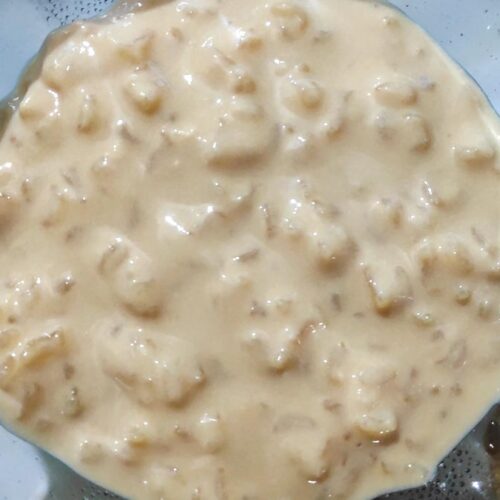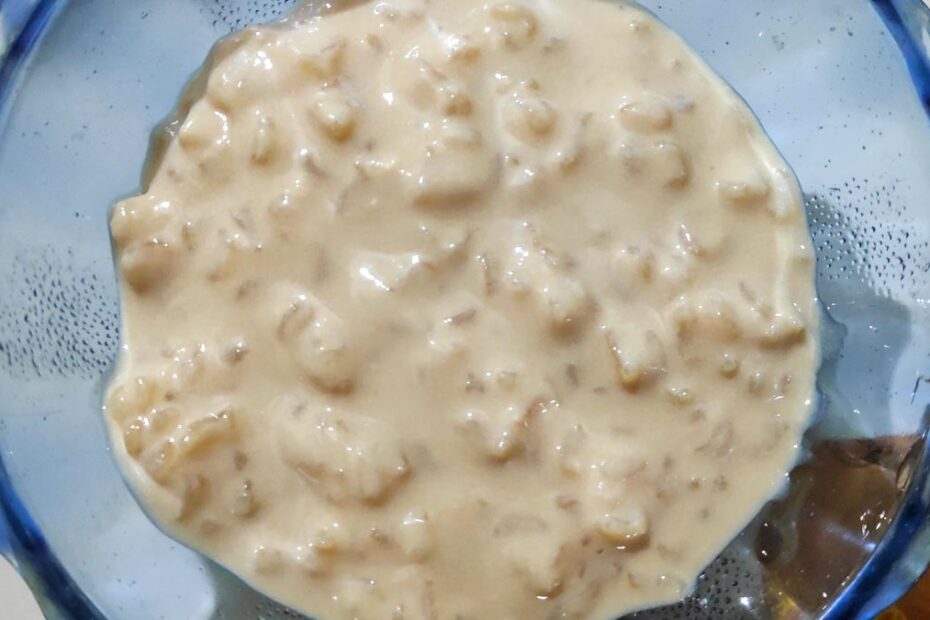Bengali Chaler Payesh is a delightful version of Kheer (a dish traditionally made in North India). This dessert is a staple during Jonmodin (birthdays) and has been a cherished way to celebrate long before cakes became popular.
Even today, every Bengali household prepares Chaler Payesh for pujas, birthdays, anniversaries, and other auspicious occasions. This dessert is incredibly delicious, melting in your mouth with every spoonful.
The milky, creamy, and nutty goodness, together with a hint of cardamom and the chewy texture of rice, creates a heavenly combination. The joy of this recipe is elevated when ‘Gobindobhog chal’ is used.
If you have a sweet tooth, the dish is surely for you. This is not just a recipe; it carries a piece of Bengal’s rich culinary heritage.
So let’s go through the list of ingredients and the procedure to make Chaler Payesh at home.

Chaler Payesh Recipe (Bengali-Style Rice Kheer)
Equipment
- 1 Induction Cooktop
- 1 Kadhai
Ingredients
- 3½ tbsp Gobindobhog Rice
- 1 l Full Cream Milk
- 5 tbsp Condensed Milk
- 2 Bay leaves
- 1 Black Cardamom
- 6-7 Green Cardamom
- 10 Cashew nuts
- 5 Almonds optional
- 1½ tbsp Raisins
- ½ cup Castor Sugar or to taste
- 2 tsp Ghee
- Water
Instructions
Prepare the rice
- First, start by washing the rice thoroughly but gently.
- After the rice is washed soak it in a sufficient amount of water.
- In another bowl soak the raisins and cashew nuts.
Prepare the spices
- Take a mortar and pestle or a sil batta and make a course to fine powder of the half black cardamom and 3 green cardamoms. Keep them aside.
Prepare the milk
- Now, pour the milk into a cooking pot (deep bottom) along with a cup of water.
- Place the pot over the flame and keep the flame on low.
- Stir and start to boil the milk.
- To the milk, add the whole black cardamom (the remaining half), and green cardamom. Also, add the ghee.
- Stir everything nicely and cook until the milk starts to reduce.
- When the milk comes to a thicker consistency add the condensed milk.
- Stir in thoroughly and let them cook for 2 more minutes.
Add the rice
- Next, add the soaked rice and cover the pot. Let them cook for 5-7 minutes.
- After this, give them a stir and then pour about a cup of water. Keep the flame on low and combine nicely.
Add the nuts and raisins
- Add the soaked cashew nuts (separate them, from the middle) and raisins.
- Chop up the almonds if using and add them to the milk.
- Stir everything nicely and let the rice cook until perfection.
Prepare the Payesh
- In between, if the milk seems to be much thicker, add a bit of hot water to reduce its thickness. We do not want the Payesh to be very thick.
- Keep on stirring and then add the castor sugar to taste.
- Stir the Payesh frequently from all sides and the bottom as well. Make sure to be gentle or else the rice will be mushy.
- After this, take a taste test. Add if anything is needed.
- Turn off the flame when the Payesh has reached the desired consistency (semi-thick).
Garnish
- Garnish it with the cardamom powder and a few chopped almonds.
And that is it! The delectable Chaler Payesh is ready to be eaten. Serve it hot or cold and savor every bite of it. You can pair it with luchi or porota and this is a great combo as both the sweet and savory flavors come through.
Prepare it in no time and relish the dish with your friends and family. This sweet dish is a bit tricky but once you start to make it, the results will definitely be great.
Happy Cooking!
